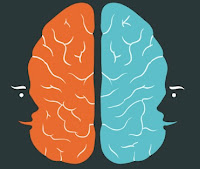In today’s society, social media is one of the most common online platforms for advertisers to reach out to their targeted audience in emerging markets. Gen Z’s social media ecosystem heavily relies on these platforms in a view to communicating with others. This extreme dependency was reinforced by a Pew survey (2014-2015), demonstrating that a staggering 94% of teens access their social media on a daily basis, of which 71% used more than one social media site. One of the most popular social media sites is YouTube, launched in 2005. YouTube not only allows teenagers to share their passion with the world but also allows teenagers to feels a sense of connection and value in their society. The world of technology has revolutionized to suit its customers best, however, what many teens may or may not notice is the complex implication and role that advertisers hold in this environment. This raises the questions whether YouTube stars are being exploited or empowered and the ripple effect it causes on its customers.
In the documentary ‘Generation Like’ (2014), Rushkoff observed several American teenagers in order to frame the intricate interrelationships between big-name brands and their young target audience. The film portrayed several normal teenagers stating that ‘social media makes them feel empowered.'
YouTube stars such as Tyler Oakley and Steven Fernandez, earn millions of likes for every video they publish on the YouTube platform. For many advertisers, this is a gold mine for views and viral popularity; giving advertising companies an opportunity that is exceptional to send out a message, and thus, encourage these stars to promote their products in return for their sponsorship. In this film, they have illuminated how they form partnerships with particular brands in order for companies to reach out to their customer. For example, in several videos, Oakley promotes and motivates the consumption of tacos from Taco Bell. Not only does this incite his viewers to purchase their own, but it also allows for a mass-media message to be sent out. Therefore, in many cases, advertisers take advantage of one’s popularity for their own benefit, which exploits their platform, and arguably empowers their consumers.
The personal connections that these YouTube stars make with their audience is what makes their business successful. Their subtle or non-subtle promotions and partnerships, allows companies to enlarge their audience, thus, their profits made.
Even though many YouTube stars may project themselves as being empowered by the opportunities they receive from sharing their passions with the world from the social media environment. However, big-name companies cause these stars to conform to an ideology or a non-existent interest of a certain product, causing our ‘synthetic’ generation to enlarge even more. While many believe, social media shows the reality and allows for a global connection, we must consider that the ‘behind the scenes’ of this massive industry is nothing more than exploitations stringed together with popularity in order to produce dollar bills.









